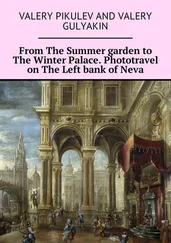The small room by Authenticity Studio, originally used as a bedroom, had two small windows. Father told the carpenter renovating Lotus Garden to seal up the windows with large sheets of plywood and paste black paper over all openings.
“It’s best to seal up the windows with bricks and mortar to prevent light from streaming in, but that would ruin the appearance of Authenticity Studio,” Father said to her with a hint of regret.
Through a friend who was living in Germany, Father bought a Leitz en-larger and purchased other film-developing material from a photography equipment store in Taichung. Yinghong, who had just begun chemistry class in junior high, was intrigued by the various chemicals, photographic developers called Hydro Quinond and Elon, and a fixer called Hypo Fixing Bath. She thought they were wondrous novelties.
For a long time, she was convinced that darkness must have provided some kind of magical effects, since negatives could be developed only in a darkroom.
Father trimmed the negatives, which were made by Agfa and came in twenty and thirty-six sheets, in the darkroom himself. When he began taking large numbers of pictures, his need for negatives increased accordingly, so he copied other photographers by cutting large film negatives into smaller ones. A five-meter-long film could be cut into thirty-six small photographic negatives, and a hundred-meter-long film could be turned into twenty large negatives.
“This is what the puluo do, to save money on negatives.” Father pronounced “professional” in the Japanese way, shortening it to “puluo.”
For a while he was keen on developing film himself. When he reached the point where he could ensure good results, and the black-and-white pictures had a clear contrast, he stopped going to the darkroom so often. During that time, Yinghong, who wrote that she wanted to be a nurse, then an inventor, in her school essays, thought that her father wanted to be a photographer, so she asked him:
“Why does Otosan take pictures?”
“Indeed! Why do I take pictures?” A hint of alarm flickered in his deep, dark eyes. “What would I do if I didn’t take pictures? How would I pass the days left to me?”
A second-year student in junior high, she did not know how to respond.
After losing interest in developing film himself, Father began collecting cameras.
The first one he bought was a Linhof, which he called a first-generation press camera. It was clunky, only partially made of metal, with an accordion-like folding section. What she liked most about this camera was that she didn’t have to close one eye and strain to see through the tiny view window. Instead, the lens could be laid flat and, with her hand covering one eye, she could look down through the lens to see everything.
Moreover, the scene she saw was reversed, creating a magical effect, a mixed sense of the real and the unreal, which served to verify what had worried her all along — nothing was stable and changeless, whether seen through a lens or in a photograph. The impression of permanence was in fact created through the multitude of instantaneous changes beyond human control.
It was through this Linhof camera that she got to see the little hill by Lotus Garden being set on fire, though of course, the right and left sides were reversed.
Lotus Garden was located on a small hill in the western outskirts of Lucheng. Over a century earlier, the Zhu ancestor who completed the construction had hoped to look at the ocean from high up on the hill. But silt gradually blocked and filled up the port of Lucheng, which, as a result, lost its former glory as the Port of Taiwan for ships from the Chinese Mainland. The one-time beach was transformed into mulberry fields. The reclaimed land pushed the shore farther and farther into the ocean, until the Zhu family no longer saw the ocean even from Sea-gazing Tower in the northwest corner of Lotus Garden.
From the time Father fell ill until his recovery, Yinghong witnessed how the hill, which had nothing but a few trees, was gradually overtaken by dark-green tasselgrass and a wild pineapple plant called pandan, blanketed in a vibrant, aggressive green.
The pandan had thick trunks with spreading leaves. Long needles dotted the edges of hard leaves infused with milky starch, giving them a ferocious, menacing appearance that stopped anyone from getting too close. The tasselgrass, however, had a profusion of thin long leaves that swayed in the wind; though it appeared delicate, its clever tendrils spread out and fought the pineapple for space.
Most of the time the pandan and tasselgrass were a ferocious green; along with the vigorous flora, they seemed to surround and swallow up the garden, like a boundless green maze, cutting off all other life inside and outside the garden with its primitive verdant curtains.
Giving up on clearing the pandan and tasselgrass, Father decided he would set the hill on fire; that caused a panic in the Upper House. The uncles and grand uncles came to talk to him several times, but to no avail, and eventually they announced with determination that they would cut off all ties with a “prodigal son who would ruin the clan.”
Father stubbornly held to his plan of a controlled burn in late spring. Lucheng, being a coastal town, suffered from fierce northeastern winds in fall and winter, when it was dry and unsuitable for anything to do with fire. Late spring was the right time, with spring rains, before the arrival of the dry summer weather. Besides, there was the southwestern wind from the ocean, with its hospitable moisture and wind direction.
In that spring, when the rains had ended and the soil was soft, Father told Luohan to hire a large group of workers, who were to cut down the primeval green pandan and tasselgrass around Lotus Garden, creating a fire wall that was over a dozen meters wide. Below the hill was nothing but paddy fields with irrigation water running along the ditches. Father estimated that the fire would stop there.
Even with detailed planning, he kept the workers around that day; buckets and any other containers they could think of were filled with water and scattered around the garden in case they were needed.
He, on the other hand, set up photographic equipment all around the garden, with Mother as his assistant to watch over the Leica III camera. The clunky old Linhof was placed on an outcropping between the hill and the garden. After adjusting the focus, Father stressed in no uncertain terms that the camera was not to be moved; he showed Yinghong how to press the button and advance the film. He even gave her permission to take twelve pictures any time she wanted during the burn.
A junior high student known in the clan to be smart and endowed with clever hands, she quickly learned how to operate the camera. Since he had given her such an important task, she used extreme caution to avoid mistakes. Overjoyed by the prospect of taking twelve pictures on her own, she kept her eyes close to the camera the whole time and saw most of the hill burn through its lens.
The pandan and tasselgrass were not tall vegetation. The latter caught fire quickly; shortly after Father threw in the torch, flames shot up and began to spread. The tongues of fire licked up, presenting a sad but captivating sight, but the pandan and the tasselgrass, about the same height as other shrubs, failed to create the expected terrifying sea of fire. Instead, the fire stayed low to the ground, rolling atop the wide open hill, and, with the boundless ocean and sky as a distant backdrop, lent a tragic beauty to its burning scene.
The large columns of churning smoke grew thicker as the fire spread. The pandan and tasselgrass had taken in so much water from the rain that they burned slowly, and, in the meantime, thick, dark smoke lingered above the bright red tongues of flame.
Читать дальше












